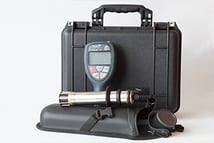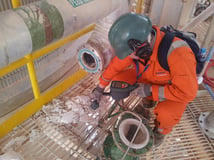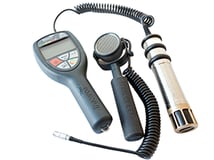Oil and gas professionals are continuously faced with the problem of identifying NORM and safely working in NORM contaminated environments. In this blog post we will discuss how to identify the most appropriate radiation survey meter for field based NORM work and how the Tracerco NORM Monitor-IS can effectively meet your NORM screening challenges and requirements.
The first consideration is always safety. In many oil and gas facilities there is potential for explosive atmospheres and the safest solution is to use an intrinsically safe meter. Intrinsic safety means the meter has been designed so that it will not generate a spark or heat with enough energy to cause ignition. The best possible solution is to select equipment that has been approved to the highest possible level for your region.
 The Tracerco NORM Monitor-IS has been approved as intrinsically safe by IEC Ex (international standard), ATEX (Europe) and by CSA (USA and Canada).
The Tracerco NORM Monitor-IS has been approved as intrinsically safe by IEC Ex (international standard), ATEX (Europe) and by CSA (USA and Canada).

Finally, and most importantly, the right detector must be used. For some regions, such as the USA, the standard methodology is to screen for gamma dose rate with a one-inch sodium iodide scintillator detector. A screening threshold of 50 µR/h is commonly used. Where NORM location assessments are made through vessel or pipe walls a scintillator probe is essential. In other regions a pancake Geiger-Muller tube is the detector of choice. These GM probes are highly sensitive to alpha and beta emissions and so are particularly useful where lead-210 based NORM is suspected. Lead-210 is commonly associated with gas production facilities and emits only weak gammas, so is more readily detected by its particulate emissions.

The Tracerco NORM Monitor-IS can be supplied with both scintillator and GM probes
For more detailed information please email radiation.monitors@tracerco.com to discuss your  NORM screening requirements and challenges.
NORM screening requirements and challenges.